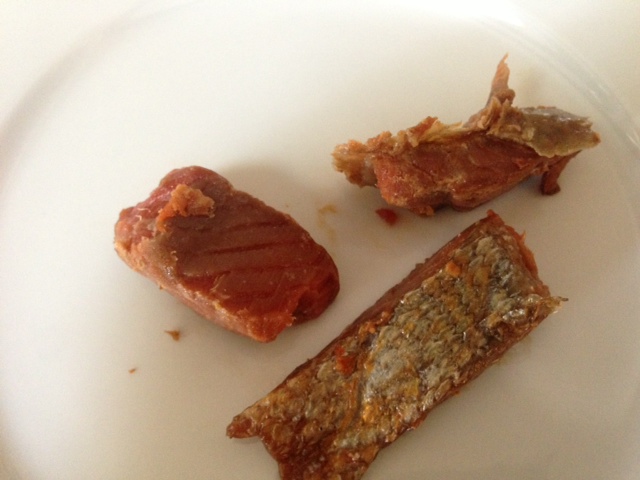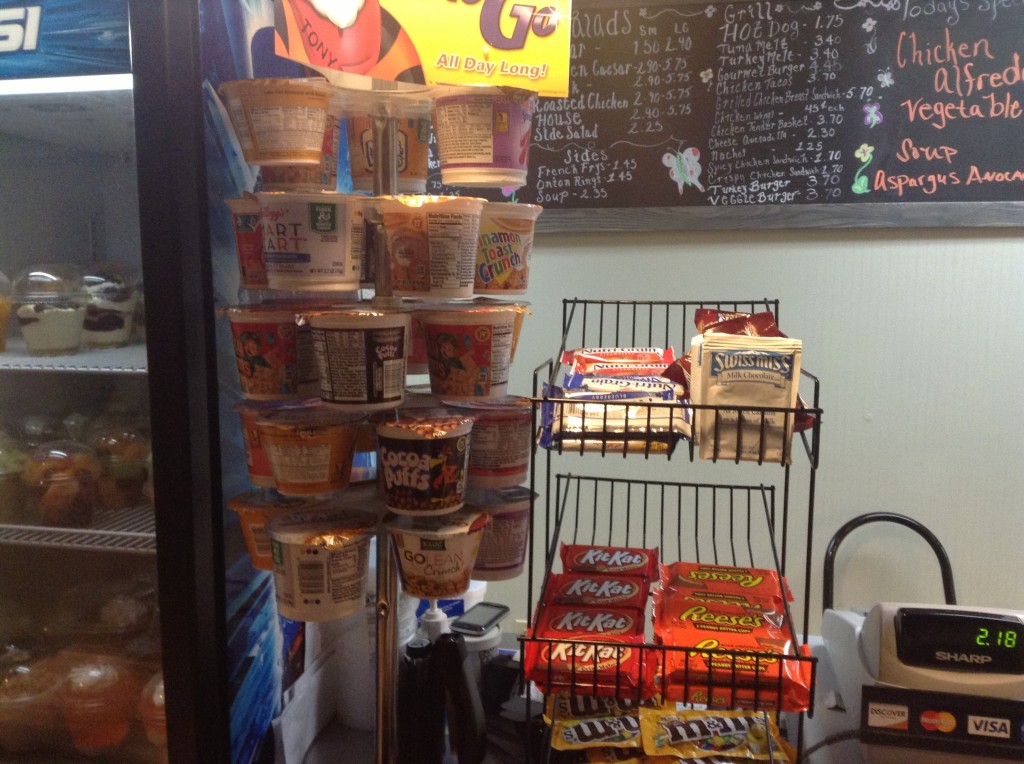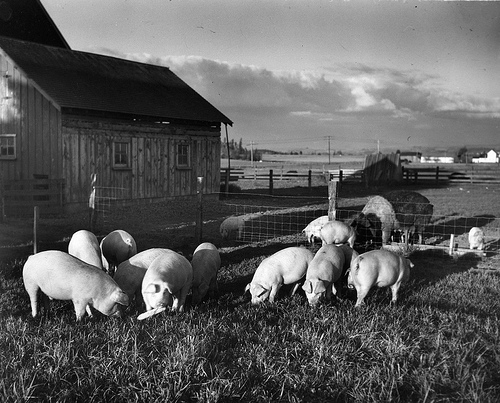 |
| Are GM Corn and Crops responsible for increasing allergies? |
The Claim:
Since GMO the number of allergies and food allergies has gone up.
Bottom Line:
Yes, food allergies and allergies have climbed but it is correlated but not caused by GMO - see below
Allergies - what are they?
An allergic reaction is an inflammatory response to a protein. That protein is something that is harmless and that is what makes little biologic sense. Common proteins that cause typical allergic reactions include pollen, dust mites, animal dander, and some mold proteins.For example: my body reacts violently to tree pollen from the Juniper tree.
Pollen is a protein, and when my body comes in contact with Juniper, a pollen protein, it results in a runny nose, a cough, aggravates my asthma, and gives me inflamed, dry eyes. There is nothing intrinsically bad about Juniper pollen, it is that my body over-reacts to it. So much so that I had to seek medical attention and that column is
here.
A severe over reaction to an allergy can be deadly. For most people getting stung by a bee is a nuisance, if you are allergic to the bee sting it can kill you. If you are allergic to a drug, such as Penicillin, and you take some- it can also cause death.
Death from allergies, and the severe reaction that can lead to death is called anaphylaxis. It is the bodies "overreaction" to the allergen and that reaction kills. That reaction can start with hives and itching all over, shortness of breath, tightening of the throat, or tingling.
Specifics - the immunology:
First the body comes into contact with the protein: breathe it, swallow it, get it on the skin and it sets off a very specific cascade of events:
The body begins to produce an antibody, IgE, that will bind the allergen. Think of IgE as the fuse, it is the key to the entire overreaction. The IgE that is formed is very specific to a protein, and fits it like a lock fits a key. There is no "loose lock" in the immune system, where any key can fit it- these are precise fits from the IgE to the protein causing the allergy (allergen).
The antibodies, IgE, or the fuse, attach to a blood cell, called a mast cell. Mast cells are found not only in the blood, but throughout the body- nose, throat, lungs, gut. Mast cells are like a dynamite. The more mast cells you have, the worse the reaction.
The allergen be it pollen, bee venom, or any protein that the IgE has built antibody against, lights the fuse- the IgE, and if it is attached to a mast cell then you have an explosion.
When the allegen (Juniper pollen in my case) is bound to the IgE that is attached to the mast cell, the mast cell cell releases a ton of chemicals - but the one that bothers most is histamine. It is histamine that causes the major effect of allergic reactions: runny nose, sneezing, coughing, worsening asthma, hives, etc.
But some allergies do more than give you runny nose, dry eyes, or asthma:
Some people have an allergy to proteins proteins you eat, such as gluten. For those allergic to gluten the allergy occurs in their gut. If you feed someone with celiac disease a wheat thin their guts will go into spasm and they will feel rotten for a while. Prolong that exposure and eventually they will have loss of tissue of their small bowel, won't be able to absorb critical nutrients very well, and lead to iron deficiency anemia, calcium deficient osteoporosis, and a series of other reactions that we are still defining.
Foods contain many proteins, and we can test for allergenic potential of those proteins. But 90-95% of all food allergies are from ten different foods (peanuts being the most famous). Of the remaining foods that cause allergies, there are about two hundred foods that cause them all.
When food is eaten it goes through the digestive system, which means the food is chewed, bathed in the stomach acid, broken down by various enzymes in the stomach and small bowel and exposed to the IgE in the gut. To imitate this scientists have come up with protocol to mimic the gut, in vitro (outside the body). This is in addition to testing in humans.
We can test for Allergies:
You can be tested for allergies fairly simply. It is a skin test - where an amount of the protein is scratched into your skin, and if you react to it then we know that you have an allergy to this. Skin test checks the body's reaction to the protein. Blood tests can also determine if your body has developed IgE against a specific protein. But just because you have IgE against a protein does NOT mean you have an allergy to it. The body produces IgE to a lot of proteins, and the majority of them do not cause reactions.
Testing for allergies is simple, safe, and done frequently.
Are there more Allergies today than before?
This seems to be a contention of many people- that we have more allergies today than we did years ago. Some of this belief is based on a bit of evidence like this: Phoenix, Arizona use to be a place that people would go to get away from allergies. Now it has some of the worst allergy seasons in the world. Does this mean more allergies? No- it just means that when Phoenix was a small town in the Sonoron desert there wasn't much that grew here. But as more people moved in they discovered that the desert could grow anything here, with water, and so as people moved here they planted their favorite things.
So now we have high concentrations of olive trees, grass, Cottonwood, Juniper, and Mulberry - none of which are native to Phoenix. As a result Phoenix has become one of the allergy capitals of the world where it previously was not.
It is a causation - we have more allergies in Phoenix because now people are planting more trees, grasses, and other vegetation that have proteins that cause allergies.
Are these allergies because of GMO? Well, no. I am not allergic to any part of corn or corn pollen, nor am I allergic to Pima cotton, or even Bt that is grown with the Pima Cotton. I am allergic to Juniper. Since so many people brought Juniper to Phoenix, I have more allergies than I ever did.
That same phenomenon - people planting non-native plants, some of which are allergenic, is happening in many cities.
Proteins and Allergies
The vast majority of GMO plants have been bred or engineered by modifying proteins already found in that plant. Not making new proteins. In times of drought a farmer will find plants that survive on less water. Farmers or scientists study the hearty plants, and either cross-breeding, which has been the method for centuries, or by isolating the genes for the proteins that keep plants hearty in dought and getting the plant to produce more of that protein.
The possibility that a GMO plant could increase allergies is not impossible but most GMO plants only differ by one or two proteins, and the way to check for allergies to these proteins are straightforward. When a new GMO plant is approved the allergenic potential is checked for. Meaning, people - like you and I, are paid to have a scratch test as well as a blood test, and if we have a positive reaction to that protein, the plant will not be approved for mass production.
Food Allergies
Food allergies have been on the rise for years, and long before GM crops came into being. But to be specific: a food intolerance is not a food allergy. Over 70% of the population does not have the ability to break down lactose, a milk sugar, as a result they don't digest the milk sugar but bacteria do - leaving them with bloating and an irritable bowel. That is not an allergy. But there are true allergies to milk- where the body has developed the IgE against a milk protein.
Food allergies have been on the rise for years before GMO. The rise is steady but not "sky rocketing." Of all of the experts in this field, none of have attributed it to GMO. (see reference section for a complete list of current hypothesis).
Potential for Food Allergies in GM Crops
Remember that to develop an allergy to food the body has to produce IgE against a protein. Without that, there can be no cascade of events to elicit the allergic reaction. Proteins can be divided in a number of families whose members closely resemble one another - where the key (protein) can fit the lock (IgE) and set off the allergic cascade. Food allergens are typically members of one of three large "groups" of proteins. If a protein is not a member of one of these three groups, it is highly unlikely to ever become an allergen. Of the proteins made in commercial GM crops there are no proteins that belong to the group of proteins that cause the great majority of the plant food allergens. Regulators do not approve crops when there is any concern about allergenicity.
All GMO Foods are Tested
It turns out that all GM foods are tested for allergies. The testing is done by the Federal government, and by other governments.
BT and allergies
BT stands for a bacteria called Bacillis thuringiensis. The idea of using different species to control weeds and pests is at the heart of organic farming and has been used for a couple of thousands of years. It was discovered that this bacterium destroyed silk larva in great numbers. Later it was found that it could protect flour against the flour moths. Ultimately the protein responsible for killing the pets was isolated and sold commercially in the United States after approval from the Environmental Protection Agency in 1961.
Bacillis thuringiensis also produces proteins that are effective against some forms of leukemia and cervical cancer.
Before BT protein was isolated, the bacteria that made BT was grown in large batches and sprayed on fields. This is a practice that is used in many organic farms to this day. As with any bacteria, the bacteria can have proteins that cause an allergic reaction, and some people with immunodeficiency who were field workers did get an infection from the bacteria.
The protein that causes death of the pests was isolated, and inserted into corn and cotton crops. As a result the total amount of pesticide used has decreased dramatically. Bt protein has been widely tested in animals and humas, and has not caused an issue.
But what about the protein. There is not a single protein that a person does not develop an immune response to. Your body will build an immune response to all proteins- but it has to decide which protein it will build the arsenal against. Once you have IgE antibodies, then you have the potential to get severe allergic reactions. There is not one place in the literature where BT has elicited an IgE antibody in a human.
GM Soy
There was a popular story about taking the protein from the Brazil nut and placing that into soy plants. When the crop was made, they took patients who were allergic to the Brazil nut and tested them. The reason you use people who are allergic to the protein is because they have built up antibodies. If you then give them this new product and it is allergic, then there will be a major allergic reaction. If you want to scam the data - that is, if you wanted to avoid that, you would take people who are not allergic to Brazil nut and test them. However, scientists are generally a pretty reliable group, and they always test with people who are positive to the antibody.
This soy bean was never marketed, never eaten by another human being once the genetically modified portion was determined to cause an allergy in some people. The project was stopped, and the GMO were destroyed. This is good- this is how we want science and genetic modification to work - if there is a problem, the GMO is destroyed.
Even while this process was well documented, and the process elucidated - the story is found on a number of websites with the claim that this soy is out there being planted. It isn't.
My role and disclaimer
My initial investigation of GMO came from a background in genetic engineering and as a physician who spends more time teaching patients to cook than I do operating on them. I have received no money from any industry in the food or agricultural business, or any funding to do any research.
What I discovered in doing this research is there is fear about GMO, and much of that fear is deep seated and unscientific. Much of what is put out on the internet for anti-GMO sites is hyperbole, not factual, and designed to evoke fear. This is to the point where the one side is easily dismissed by science types.
Labeling of GMO foods should be, in my opinion, universal and transparent. The testing done for the foods should be transparent and funded not directly by industry, but an independent group who receive an excise tax to test GMO.
What Should You Do?
If you have concerns then I highly recommend you grow your own fruits and vegetables as much as you can. First, they will taste much better, and second, they may be healthier. If you think you have an allergy to any proteins, you should get tested by an allergist. From my own personal research, I am not concerned about the current GMO crops. What should frighten people is not the highly regulated GMO industry that we have today - what should frighten people is the technology to do this will be readily available and can be done in a garage. It is the unregulated role that, in the future, may cause harm. But that is about 15 years away- plenty of time for you to learn to garden.
REFERENCES:
The mammalian safety of Bacillus thuringiensis- based insecticides. J. Invert. Pathol. 77:13-21Siegel JP (2001).
Safety and advantages of Bacillus thuringiensis-protected plants to control insect pests. Regulatory Toxicology and Pharmacology 32:156-177. A key review which summarises the uses of Bt proteins to control insect pests in agriculture. Importantly provides key data substantiating the ~million-fold safety margins for Bt proteinsBetz FS, Hammond BG, and Fuchs, RL. (2000).
Bt: Mode of action and use Archives of Insect Biochemistry and Physiology Whalon ME and Wingerd BA (2003)., 54: 200-211
Arthropod pest management in organic crops Zehnder, G-F , Gurr GM, Kuehne S, Wade MR, Wratten SD and Wyss E (2007).. Annu Rev Entomol. 52: 57-80
Allergenicity assessment of genetically modified crops: what makes sense? Goodman RES, Vieths S, Sampson HA, Hill D, Ebisawa M, Taylor SL and van Ree, R. (2008). Nat. Biotech. 26: 73-81.
Risks of allergic reactions to biotech proteins in foods: perception and reality.Lehrer SB and Bannon GA (2005). Allergy, 60: 559–564
Structural, biological, and evolutionary relationships of plant food allergens sensitizing via the gastrointestinal tract.Mills ENC, Jenkins JA, Alcocer MJC and Shewry PR (2004). Critical Reviews in Food Science and Nutrition, 44:379–407
Identification of a Brazil-nut allergen in transgenic soybeans. Nordlee JA, Taylor SL, Townsend JA, Thomas LA and Bush RK (1996).N. Engl. J. Med., 334:688–92.
Bacillus thuringiensis A genomics and proteomics perspective Mohamed A Ibrahim, Natalya Griko, Matthew Junker, and Lee A Bulla1,Bioeng Bugs. 2010 Jan-Feb; 1(1): 31–50.PMID: 21327125
A multi-laboratory evaluation of a common in vitro pepsin digestion assay protocol used in assessing the safety of novel proteins. Thomas K, Aalbers M, Bannon GA, Bartels M, Dearman RJ, Esdaile DJ, Fu TJ, Glatt CM, Hadfield N, Hatzos C, Hefle SL, Heylings JR, Goodman R E, Henry B, Herouet C, Holsapple M, Ladics GS, Landry TD, MacIntosh SC, Rice E A, Privalle LS, Steiner HY, Teshima R, Van Ree, R, Woolhiser M, and Zawodny J (2004). Regul Toxicol Pharmacol 39:87-98.
Risks of allergic reactions to biotech proteins in foods: perception and reality. Lehrer SB andBannon GA (2005) Allergy, 60: 559–564.
Food-specific theories question if our diets have changed in subtle ways, maybe with nutrients that push more toward allergic responses. Others note that eating more or maybe even less of specific allergenic foods is to blame. Some theories even center on how a food is processed. For example, maybe roasting peanuts makes them more allergenic than boiling or frying, a common preparation in Asia, where peanuts are frequently eaten but peanut allergy rates appear lower, says Scott H. Sicherer, MD. He is associate professor of pediatrics at the Jaffe Food Allergy Institute, Mount Sinai School of Medicine in New York. Other theories blame a lack of sun exposure and decreased vitamin D, he adds, noting data indicating that more people with anaphylaxis live in northern climates.
The hygiene theory also is popular. Some experts say society is too clean, keeping kids' immune systems from maturing as they did in the past. "The hygiene hypothesis says that we are oversanitizing the early environment of the child," Dr. Bassett says. "The immune system has less exposure to dirt, germs and bugs."
In support of this perspective, researchers point to Eastern Germany before the fall of the Berlin Wall. "They had much lower rates of allergy," Dr. Field says. "As they were westernized, they had more."
Maybe a little dirt is not so bad, Dr. Rosenstreich says. "In the farm studies, children who live on farms in close proximity to animals and are exposed to endotoxins have fewer allergies. And it looks like a pet in the home in the first year of life may well protect children from asthma. This is the opposite of what we've been teaching." - quoted from
Allergic reaction: Food allergies increasing, especially among children
■ Treatment and management present a challenge for physicians
KATHLEEN PHALEN TOMASELLI amednews correspondent — Posted Dec. 29, 2008



































